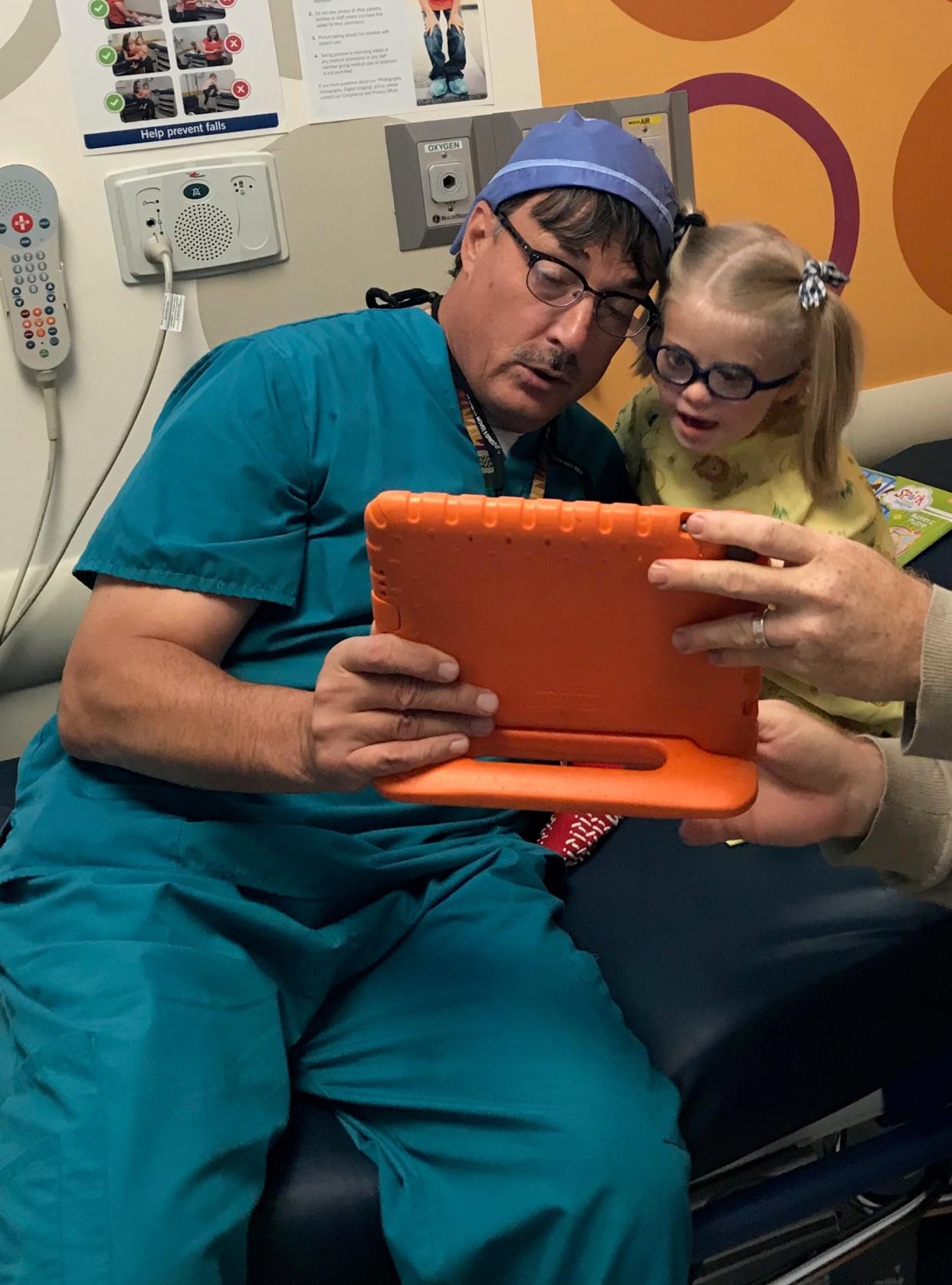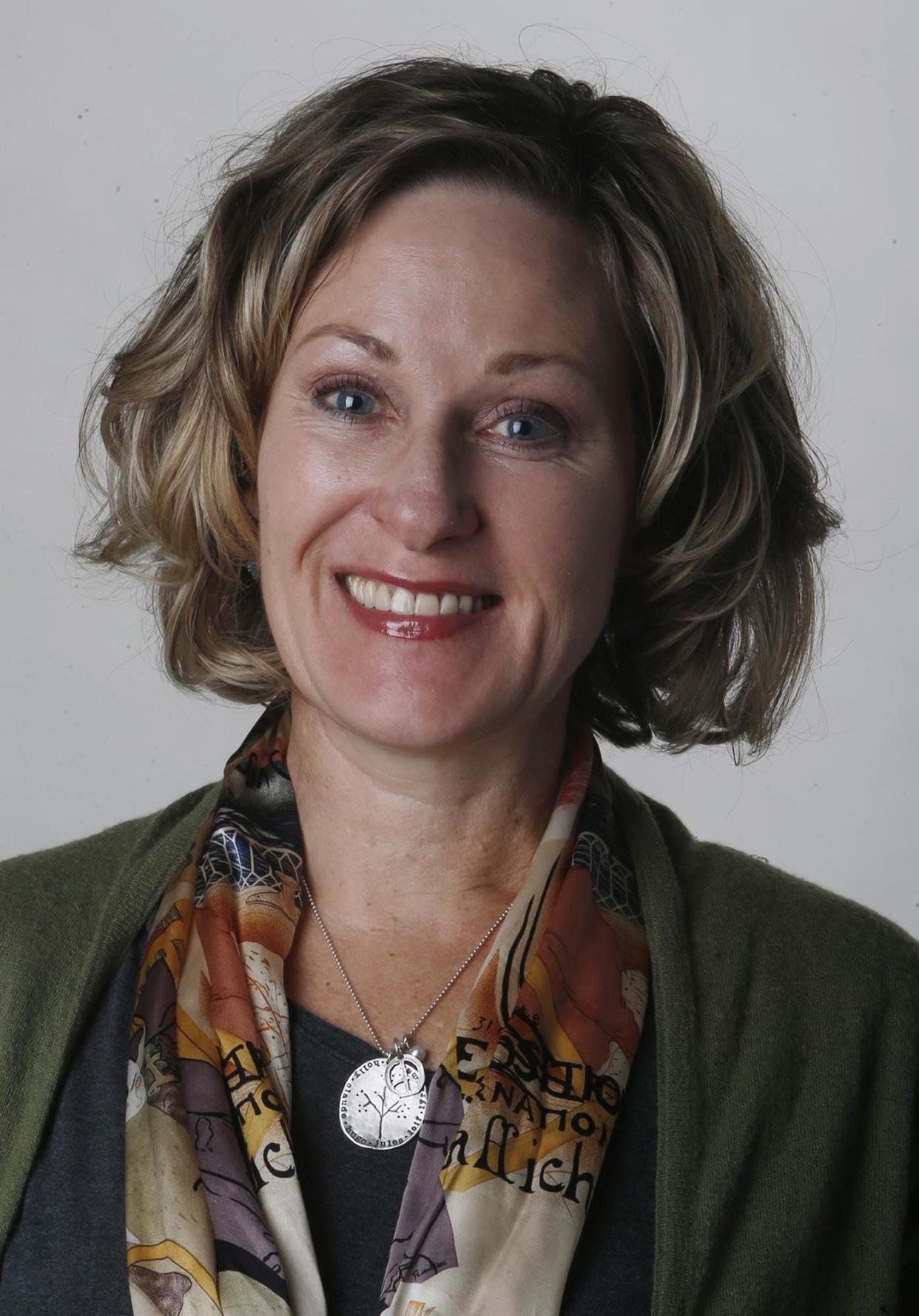Akron Children's Hospital needs the vision to add optical care | Holly Christensen
Rainbow Babies and Children's Hospital has it. Nationwide Children's Hospital has it. Even Dayton Children's Hospital has it. Akron Children's Hospital, however, does not. What is lacking? An optical department in its Vision Center.
During my pregnancy with my now 11-year-old daughter, Lyra, non-invasive testing revealed nothing unusual. With eyes scrunched shut, Lyra cried loudly at the moment of her birth. I took her in my arms and when she opened her eyes, I saw what the testing had not. "Her eyes look Downsy and her pupils are milky white," I said.

The first weeks of Lyra's life were a medical whirlwind. Children's Hospital's Genetic Center confirmed that Lyra has trisomy-21, the most common form of Down syndrome. That same week, Dr. Richard Hertle, an ophthalmologist at Akron Children's Vision Center, diagnosed Lyra's bilateral cataracts. Her lenses were surgically removed one at a time at ages six and seven weeks. Until Lyra's diagnosis, I was unaware cataracts could occur congenitally. In the typical population, only one third of 1% of babies are born with cataracts. In the Down syndrome population it is 3%, also a small number.
Unlike cataract surgery for adults, synthetic intraocular lenses (IOLs) are not implanted just after a baby's lensectomies. Eyeballs grow until age 20, with rapid growth occurring both immediately after birth and again at puberty. Furthermore, studies show that IOLs implanted before the age of 5 significantly increase a child's chances of glaucoma.
I quickly came to trust Dr. Hertle. When asked details about the surgeries and eye anatomy, he became as animated as a kid at his own birthday party. During her two lensectomies, he installed scaffolding in her tiny eyeballs for the placement of IOLs, should she need or want them at a later date.
After her eyes had healed, Lyra wore contact lenses that when viewed in profile looked like alien space ships —discs with a sizable bulge in the middle. But as she got older (and stronger), changing Lyra's lenses became difficult. I would hold Lyra tight while one Vision Center technician used a speculum to hold open her eyelids and a second technician changed the lenses.

When she was 3, we all agreed that changing Lyra's contacts was too traumatizing and switched her to glasses. With no natural lenses, Lyra's prescription is +22, and the lenses of her glasses are very thick. She wore Miraflex frames, a then widely available brand designed for the small nose bridges of babies and toddlers. They also work well for young children with Down syndrome, as they typically retain small nose bridges throughout life.
Miraflex is no longer an option. In 2020, the brand was acquired by the eye frame mega-conglomerate Essilor Luxotica Group, which promptly discontinued the line. Other brands, including Specs4Us and Erin's World, also are designed for the unique facial features of people with Down syndrome. But it is a struggle for parents of children with a variety of special vision needs to find these, or other well-fitting, truly functional, frames.
And here's why: Your local eye doctor does not have many patients with Down syndrome or other diagnoses that require specialized frames, so they are unlikely to carry them. Also, most optometry and ophthalmology practices do not accept Medicaid, which they must in order for a patient to use the Ohio Department of Health's secondary state medical insurance, Children with Medical Handicaps (CMH). A pair of glasses for a child like Lyra can easily cost more than $500.
The Vision Center at Akron Children's Hospital does their patients a gross disservice by not having an optical department. Unlike the offices of most eye doctors, the Vision Center's patient population has an abundance of children who need specialized eyewear. And, like most children's hospitals, Akron Children's accepts Medicaid and CMH.
When I first wrote of this glaring optical oversight back in 2018, a team member of the Vision Center reached out to tell me that they would offer frames when they moved to their new location in the Considine Building in 2019. Yet as of today, the Vision Center still lacks optical care.
Lyra wore Miraflex frames for about four years. When she outgrew them, I began buying frames online and modifying them. Nose pads help keep the heavy lenses in front of her eyes, though it's never as perfect as the frames designed for small nose bridges. And because the stems of frames designed for a typical child are too long for children with DS, I cut them with wire cutters, cover the sharp ends with silicone sleeves and re-bend them to fit around her ears.
On April 1, a letter from the Vision Center informed us that Dr. Hertle had retired two days earlier. Lyra has an army of support for her Down syndrome needs at school and through private therapies. But I have counted on Dr. Hertle alone for her medical eye care. I was shocked when I read the letter and momentarily felt panicked. However, change brings with it opportunities. I would never have left Dr. Hertle's care. But as he's no longer at Akron Children's, we now will make the trek to Rainbow Babies and Children's for truly comprehensive vision care.
Contact Holly Christensen at whoopsiepiggle@gmail.com.
This article originally appeared on Akron Beacon Journal: Akron Children's needs vision to add optical care Holly Christensen
